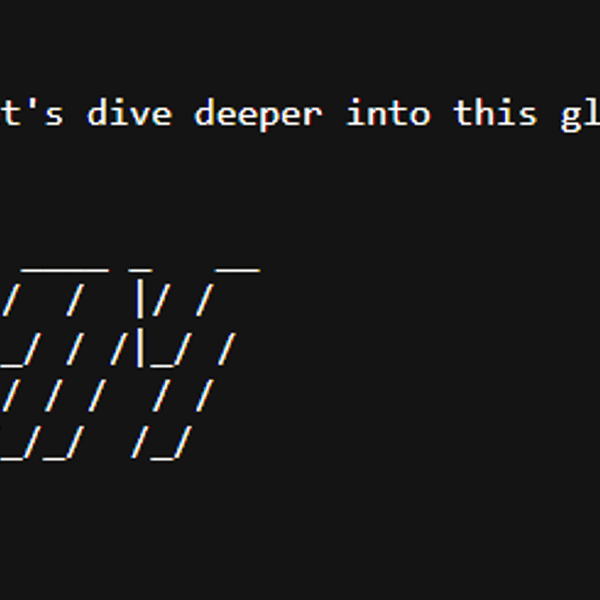"IMT/USDT Price Prediction: Can It Reach $1 in 2025?"
The cryptocurrency market is always full of surprises, with tokens experiencing massive price swings driven by speculation, adoption, and technological advancements. One such token gaining traction is $IMT Coin, which has sparked curiosity among investors. The big question is: Can IMT reach $1 by 2025? Let’s analyze the possibilities using market trends, historical performance, and key price calculations.
---
IMT Coin's Current Market Performance
To predict whether IMT Coin can hit $1, we need to assess its current price, market cap, and growth potential. Assuming the current price is around $0.01 (for example), here’s what needs to happen for it to reach $1:
\text{Growth Factor} = \frac{\text{Target Price}}{\text{Current Price}}
= \frac{1.00}{0.01} = 100x
This means IMT must grow by 100x in price, which is possible but highly ambitious.
---
Factors That Could Drive IMT to $1
1. Market Capitalization and Demand
IMT’s price is directly linked to its market cap, calculated as:
\text{Market Cap} = \text{Price} \times \text{Circulating Supply}
If IMT has a supply of 10 billion tokens, reaching $1 would require a market cap of $10 billion. This would place it among the top cryptocurrencies, competing with well-established projects like Solana or Cardano.
2. Exchange Listings
If IMT gets listed on major platforms like Binance or Coinbase, its liquidity and demand could surge, pushing its price higher.
3. Real-World Utility
For IMT to grow significantly, it must provide real-world use cases such as DeFi integrations, payments, or NFT applications.
4. Crypto Market Trends
If Bitcoin and Ethereum continue their bullish trends into 2025, altcoins like IMT could experience parabolic growth as investors look for high-potential projects.
---
Challenges to Reaching $1
While 100x growth is possible in crypto, IMT faces challenges:
Competition: Thousands of altcoins are fighting for attention.
Market Volatility: Crypto prices are highly unpredictable.
Adoption: Without strong development and partnerships, reaching $1 is unlikely.
---
Conclusion: Will IMT Hit $1 in 2025?
Reaching $1 by 2025 is possible but highly ambitious. IMT needs major exchange listings, real-world utility, and strong market trends to achieve such growth. Investors should analyze trends and invest wisely before making any decisions.
What do you think? Can IMT reach $1? Let us know your thoughts!
XRP: The Future of Cross-Border Payments and Financial Innovation
In the ever-evolving world of cryptocurrency, few digital assets have managed to capture as much attention as XRP. Developed by Ripple Labs, XRP was designed with a clear mission: to revolutionize the way cross-border payments are made. Unlike Bitcoin and Ethereum, which focus on decentralization and smart contracts, XRP aims to work alongside financial institutions to create a more efficient, cost-effective, and scalable global payment system. But what makes XRP so special, and why is it still one of the most discussed assets in the crypto space? Let’s dive in.
XRP’s Unique Technology and Speed
One of XRP’s biggest advantages is its transaction speed. While Bitcoin transactions can take 10 minutes or more to confirm, XRP transactions are settled in just 3 to 5 seconds. This is thanks to its unique consensus protocol, which doesn’t rely on traditional mining. Instead, a network of independent validators ensures transaction integrity, making it not only faster but also far more energy-efficient than proof-of-work blockchains.
Bridging the Gap Between Traditional Finance and Crypto
A major selling point for XRP is its close ties with banks and financial institutions. Unlike many cryptocurrencies that seek to replace traditional banking, Ripple’s vision is to complement and improve the existing financial system.
Through RippleNet, banks and payment providers can leverage XRP as a bridge currency, allowing for near-instant global transfers at a fraction of the cost of traditional methods like SWIFT. This approach has led to partnerships with hundreds of financial institutions worldwide, including Santander, American Express, and SBI Holdings.
Regulatory Battles and the SEC Lawsuit
No discussion about XRP is complete without mentioning the legal battle with the U.S. Securities and Exchange Commission (SEC). In December 2020, the SEC sued Ripple Labs, alleging that XRP was sold as an unregistered security. This case sent shockwaves through the crypto industry and led to a temporary delisting of XRP from major exchanges.
However, in 2023, Ripple secured a partial victory when a U.S. court ruled that XRP is not a security when sold to retail investors. This was a significant win for Ripple and set a crucial precedent for the crypto market. With this legal uncertainty gradually clearing up, investor confidence in XRP has been on the rise.
Adoption and Real-World Use Cases
Beyond banking, XRP is also making strides in real-world adoption.
Remittances: XRP has been integrated into remittance services, allowing users to send money across borders quickly and affordably.
Central Bank Digital Currencies (CBDCs): Ripple is actively working with governments to explore how XRP’s technology can support CBDCs.
NFTs and Tokenization: With the launch of the XRP Ledger (XRPL) supporting NFT creation and asset tokenization, the XRP ecosystem is expanding beyond just payments.
Price Predictions and Future Outlook
Despite market fluctuations, XRP has remained one of the top cryptocurrencies by market cap. Analysts speculate that if Ripple continues to grow its banking partnerships and regulatory clarity improves, XRP could see significant price appreciation in the coming years. With the rising demand for fast and cost-efficient global payments, XRP is well-positioned for mainstream adoption.
Final Thoughts
XRP is more than just another cryptocurrency—it’s a game changer for the financial world. Its ability to facilitate instant, low-cost international transactions, combined with growing institutional adoption, makes it one of the most promising digital assets in the space. While challenges remain, XRP’s resilience and strong fundamentals suggest that it will continue to be a key player in shaping the future of global finance.
What are your thoughts on XRP? Are we on the verge of a financial revolution? Let’s discuss!
Concerns Over $IMT’s Long-Term Viability Amidst Competitive Web3 Gaming Landscape
With $IMT (Immortal Token) now live on Bitget, the Web3 gaming community is actively debating its potential. While the listing is a significant milestone, the long-term sustainability of $IMT remains uncertain. The competitive nature of the Web3 gaming industry, potential flaws in tokenomics, user retention challenges, and external market forces all contribute to a bearish outlook for the token.
1. Fierce Competition in Web3 Gaming
The Web3 gaming market is highly saturated, with numerous established projects competing for user attention. Titles like Axie Infinity, The Sandbox, Illuvium, and Gods Unchained have already secured strong footholds, making it difficult for new entrants like Immortal Rising 2 to carve out a sustainable niche.
Challenges Against Competitors:
Established Player Bases: Players invested in existing Web3 games often remain loyal due to their holdings in in-game assets, making user acquisition for $IMT an uphill battle.
Superior Funding & Partnerships: Many top GameFi projects are backed by venture capital firms, gaming studios, and major exchanges, giving them an advantage in development, marketing, and liquidity.
Ongoing Innovation: Competing projects continuously upgrade gameplay mechanics, NFT integration, and token models, making it difficult for Immortal Rising 2 to maintain relevance without significant ongoing improvements.
Potential Outcomes for $IMT:
✔️ Best-Case: Immortal Rising 2 successfully differentiates itself with unique gameplay and tokenomics, attracting a stable user base.
❌ Worst-Case: The project struggles to stand out, leading to low adoption and poor token performance.
2. Uncertain Tokenomics and Sustainability Risks
The long-term success of $IMT depends on a well-balanced economy, but many GameFi projects suffer from flawed tokenomics that result in rapid price declines. If $IMT follows a short-term “play-to-earn” (P2E) model without strong demand drivers, its value could drop significantly after initial hype.
Common Tokenomics Pitfalls in GameFi:
1. Inflationary Rewards System:
Many P2E games issue excessive rewards in native tokens, causing rapid supply expansion.
If $IMT inflation outpaces demand, token value will decline.
2. Weak Incentives for Holding:
If players are only earning and selling $IMT instead of using it for in-game purchases, sell pressure increases, leading to price drops.
There must be utility beyond speculation, such as staking, governance, or NFT-based use cases.
3. Lack of Sustainable Revenue Streams:
Successful blockchain games generate revenue from NFT sales, battle passes, in-game purchases, and marketplace fees.
If $IMT relies solely on new player influx for economic sustainability, it risks becoming a Ponzi-like model, leading to collapse when new users decline.
Potential Outcomes for $IMT:
✔️ Best-Case: The tokenomics ensure a sustainable in-game economy, rewarding both early adopters and long-term players.
❌ Worst-Case: The game falls into hyperinflation and token dumping, resulting in price crashes.
3. User Retention & Engagement Challenges
The biggest issue in Web3 gaming isn’t just attracting players—it’s keeping them engaged. If Immortal Rising 2 fails to offer compelling gameplay beyond its token rewards, user drop-off will be inevitable.
Retention Risks for Immortal Rising 2:
Weak Gameplay Mechanics:
Many blockchain games focus too much on earning mechanics and neglect gameplay depth.
If Immortal Rising 2 lacks engaging content, progression systems, or competitive mechanics, players will leave for more enjoyable Web2 and Web3 games.
Declining Play-to-Earn (P2E) Appeal:
P2E models were highly popular in 2021-2022, but many have failed due to unsustainable economies.
Players today seek value beyond token rewards, including community, storylines, and unique gaming experiences.
Economic Dependency on New Players:
If the game’s economy relies on new users continuously buying in, it becomes a pyramid structure, leading to collapse when growth slows.
Potential Outcomes for $IMT:
✔️ Best-Case: Immortal Rising 2 delivers an engaging, competitive game that retains players even without token rewards.
❌ Worst-Case: Players exit after farming $IMT, causing a liquidity drain and price crash.
4. Broader Market and Regulatory Risks
Even if the project is well-executed, external factors can heavily influence its long-term viability.
Key External Risks:
1. Crypto Market Volatility:
If the overall crypto market turns bearish, GameFi tokens like $IMT often suffer heavy losses as investors exit speculative assets.
Past bear markets have wiped out many P2E projects, with only a few surviving.
2. Regulatory Crackdowns on GameFi:
Governments and regulatory bodies are increasing scrutiny on crypto gaming, NFTs, and reward-based token models.
Stricter regulations could limit the game’s accessibility or require compliance measures that reduce profitability.
3. Liquidity and Exchange Support:
While Bitget is a notable exchange, lack of listings on Binance, Coinbase, or KuCoin could limit liquidity.
Low liquidity makes $IMT more vulnerable to price manipulation and large sell-offs.
Potential Outcomes for $IMT:
✔️ Best-Case: The project successfully navigates market cycles and regulatory challenges while expanding into major exchanges.
❌ Worst-Case: Crypto winter or legal restrictions stunt $IMT’s growth and cause its decline.
Final Verdict: High-Risk, Uncertain Reward
While $IMT’s listing on Bitget is a positive step, several challenges cast doubt on its long-term viability:
✔️ Opportunities: If the game delivers an engaging experience, balances its economy, and secures strong partnerships, $IMT could succeed.
❌ Risks: If the project fails to differentiate itself, lacks sustainable tokenomics, and suffers from market downturns, $IMT could become another failed GameFi token.
Key Factors to Watch:
🔹 Gameplay quality and adoption rates
🔹 Updates on tokenomics adjustments
🔹 Liquidity growth and exchange expansions
🔹 Regulatory developments affecting GameFi
Investment Perspective:
Short-Term Traders: May find volatility opportunities but must time exits well.
Long-Term Investors: Should approach with caution and monitor roadmap execution before committing.
$IMT
The NFT Market Collapsed By 63% In The First Quarter Of 2025
The NFT market begins 2025 on a bitter note, with a brutal drop of 63% in sales. Industry icons, such as CryptoPunks and Bored Ape Yacht Club, are collapsing drastically! Yet, amidst this chaos, some unexpected collections are emerging, redefining the rules of an ecosystem in full transition.
In the first quarter of 2025, Bitcoin and Ethereum exhibited catastrophic performances ! And they are not alone, as the non-fungible tokens (NFT) market also experienced a significant decrease, with sales dropping by 63% compared to the same period in 2024, reaching $1.5 billion against $4.1 billion the previous year. March was particularly hard hit, recording a 76% drop in sales, from $1.6 billion in March 2024 to $373 million in March 2025.
Despite this general downward trend, some NFT collections have managed to stand out and record notable gains. Pudgy Penguins, for example, recorded sales of $72 million during the first quarter of 2025, an increase of 13% compared to the $63.5 million from the same period in 2024.
Similarly, Doodles saw its sales increase from $22.6 million to $32 million, a rise potentially attributed to its growing presence in the mainstream and a recent collaboration with McDonald’s. Milady Maker, an NFT collection based on Ethereum, experienced the largest percentage increase, with a 58% rise in its sales volume.
On the other hand, other major collections have suffered significant declines. CryptoPunks recorded $60 million in sales in the first quarter of 2025, a decrease of 47% from the $114 million in the same period in 2024. The Bored Ape Yacht Club (BAYC) experienced an even sharper drop, with sales volume falling by 61%, from $78 million to $29.8 million.
Moreover, Bitcoin-based NFTs have seen their average price increase despite a significant decline in total sales volume. In the first quarter of 2025, the average value of NFTs on Bitcoin reached $633.24, up from $559.05 in 2024 and $63.45 in 2023. However, Bitcoin-based NFT sales plummeted dramatically to $291 million, a 79% decrease from the $1.4 billion recorded in the first quarter of 2024.
As the overall NFT market wobbles, a few collections manage to assert themselves and capture public attention. This resilience in the face of the storm signals a new era for NFTs: more selective, more mature, where only strong brands and innovative projects will emerge, much like Bitcoin miners after the trap awaiting them in a few days.


 Prezzo più basso
Prezzo più basso Prezzo più alto
Prezzo più alto 















































Dati social di APENFT
Nelle ultime 24 ore, il punteggio riguardo l’opinione generale sui social media per APENFT è stato 3, e l’opinione generale sui social media verso l'andamento dei prezzi di APENFT è stato Rialzista. Il punteggio complessivo di APENFT sui social media è stato di 0, collocandosi al 1282° posto tra tutte le criptovalute.
Secondo LunarCrush, nelle ultime 24 ore le criptovalute sono state menzionate sui social media per un totale di 1,058,120 volte, con APENFT che è stato menzionato con un rapporto di frequenza pari al 0%, posizionandosi al 1173° posto tra tutte le criptovalute.
Nelle ultime 24 ore, ci sono stati in totale 50 utenti unici che hanno discusso di APENFT, con un totale di 6 menzioni riguardo APENFT. Tuttavia, rispetto alle 24 ore precedenti, il numero di utenti unici ha avuto un/una diminuzione del 17%, inoltre il numero totale di menzioni ha avuto un/una Incremento del 500%.
Su X, c'è stato un totale di 0 tweet che hanno menzionato APENFT nelle ultime 24 ore. Tra questi, il 0% è rialzista su APENFT, il 0% è ribassista su APENFT ed il 100% è neutrale su APENFT.
Su Reddit, ci sono stati 28 post che hanno menzionato APENFT nelle ultime 24 ore. Rispetto al precedente periodo di 24 ore, il numero di menzioni ha avuto un/una diminuzione del 20%.
Panoramica su tutti i social
3